Community
Out of the Archives | A ‘ghost sign’ on PenLight’s former Warehouse No. 3
Editor’s note: Harbor History Museum Executive Director Stephanie Lile is authoring an occasional series of articles providing more in-depth information on items in the museum’s collection.
Community Sponsor
Community stories are made possible in part by Peninsula Light Co, a proud sponsor of Gig Harbor Now.
It began with a small wooden sign hanging from a single nail above the door. “Warehouse No. 3” was painted on the peeling white board in faded black paint.
We hadn’t paid much attention to that dangling sign until we decided to paint the doorframe and attach a museum window cling to the door. But the little sign was a clue. One that nagged at me about the deeper history of Warehouse No. 3.
On closer look, we had no blueprints for the metal building, no obvious written history. But as is often the case, while looking for something else, I came across an unassuming but informative image in the museum’s Frank Owen Shaw photography collection.
The image didn’t look like much. At first glance it appeared to be a picture of the Austin/Galbraith Mill’s “new” sawdust burner. In the foreground, however, was a truck. Nearby, the ground was dug up and large timbers were stacked nearby. The caption read, “Peninsula Light Co. equipment garage under construction by Howard Tveter.” The date on the photo was July 11, 1949.
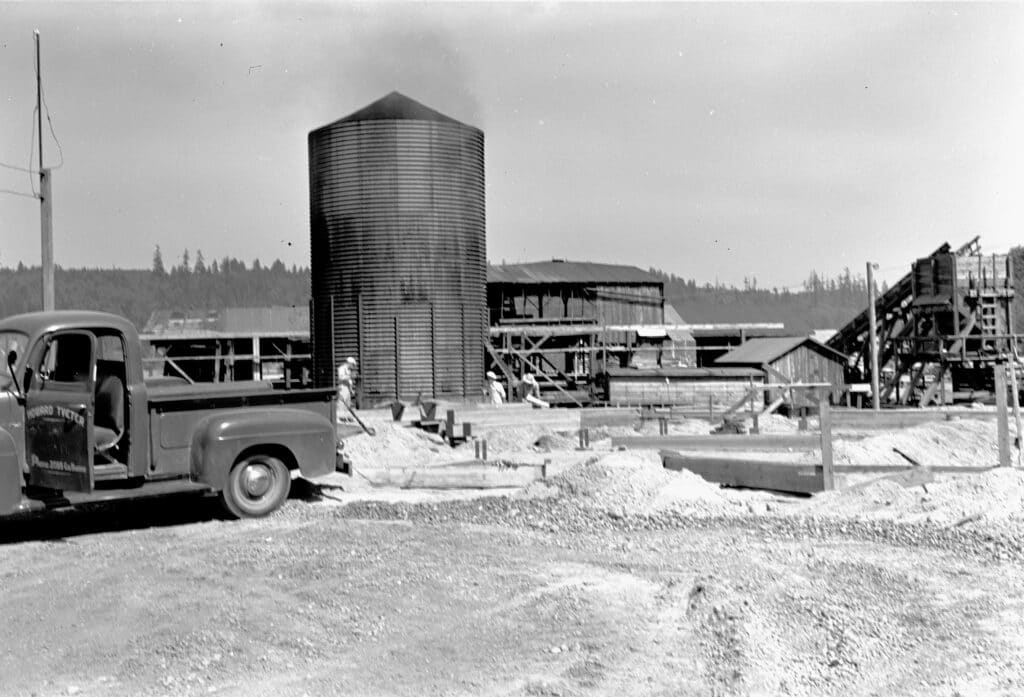
Howard Tveter begins work on the Peninsula Light equipment warehouse in July 1949. Tveter was a local contractor whose parents had immigrated from Norway and settled in Crescent Valley. Photo by Frank Owen Shaw, Harbor History Museum Collection.
PenLight’s first home
While the timber frame, corrugated metal warehouse still stands today on the Harbor History Museum campus, little evidence is left of the Peninsula Light Company’s first office that stood about 200 feet away. (Gig Harbor Now maintains a small office in part of this building.)
Formed 100 ago, nearly to the day, the Peninsula Light Company took over the two-story white building on the site that had once been the Eve-Glo Dance and Music Studio.
Evelyn and Gloria were early arts educators who taught music and dance to children in the community. Their building was perched next to Donkey Creek, facing what is now North Harborview Drive. The studio closed after a few years, and the light company brought the property in 1934. The only evidence remaining of that building is a small concrete stairway hidden beneath the wooden stairs leading to the museum from North Harborview … and a handful of photographs.
One of those photographs includes the original Peninsula Light sign that perched at the front the office building. That image and the little wooden sign now in the museum collection were the inspiration for the newly painted “ghost sign” on the face of Warehouse No. 3.
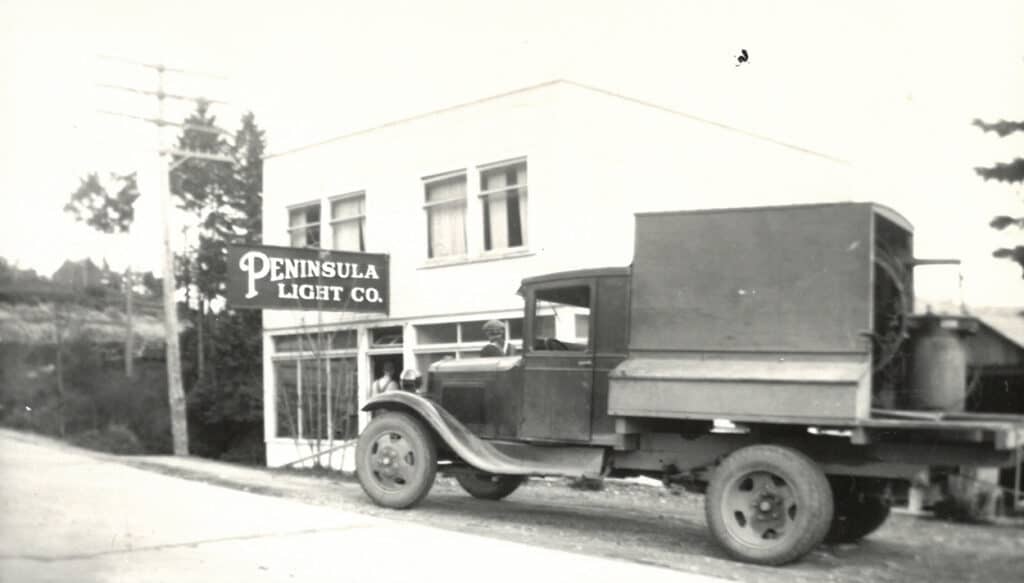
The first Peninsula Light Company office was situated next to Donkey Creek on North Harborview Drive. The building had originally been built as the Eve-Glo Dance Studio. Photo courtesy of Peninsula Light Company, c. 1926-1934.
Historic buildings
Why’d we do it? First, as the Gig Harbor Peninsula Historical Society (dba Harbor History Museum), we feel it’s important to identify historic buildings throughout our community. As unassuming as the old metal warehouse is, it has a purpose-built past and had been a vital component of the recent restoration of the FV Shenandoah, now a centerpiece of the museum’s new Maritime Gallery.
Also of that 1920s decade are a handful of other buildings and structures around town that are featured in the current special exhibit “Little Bitty Boom Town: Gig Harbor in the 1920s.” One of the marvels of 1920s engineering as featured in the exhibit are the mighty power towers constructed on either side of the Narrows. The project boasted the longest span of power cables in the country. Along with the rise of those towers in 1925 was the formation of the fledgling Peninsula Light Cooperative.

Two towers were built in 1925 on each side of the Narrows to hold the longest span of power cables known in the country at that time. Artist unknown, image from brochure in the Harbor History Museum collection.
When Peninsula Light formed in 1925, the community was buzzing with news of the Cushman Dam. Hydro-electricity produced at Cushman would pulse from the dam in Mason County to the west end of Tacoma. Gig Harbor would benefit from being part of the pathway for the surge of electricity.
As the cooperative formed, locals were hired and news of mighty power poles being installed along Crescent Valley and Reid Drive splashed across the papers. Massive logs to be used for poles were harvested and brought to local log dumps with special equipment.
Celebrating a century
We didn’t expect to find much in the archives about Cushman Dam or the power towers, but we were wrong. Not only did we find images of the newly constructed towers, we found a simple yet remarkable map showing the path of power lines as they carried electricity from dam to towers and across the Narrows to the growing community of West Tacoma. This map is on view in “Little Bitty Boom Town.”
A hundred years is a long time when it comes to changing technology and how integral electricity has become to our daily lives. On Monday, July 14, 2025, the museum campus is the location for a community event celebrating the Peninsula Light Company’s 100th anniversary celebration; because it all started here, on this original site.
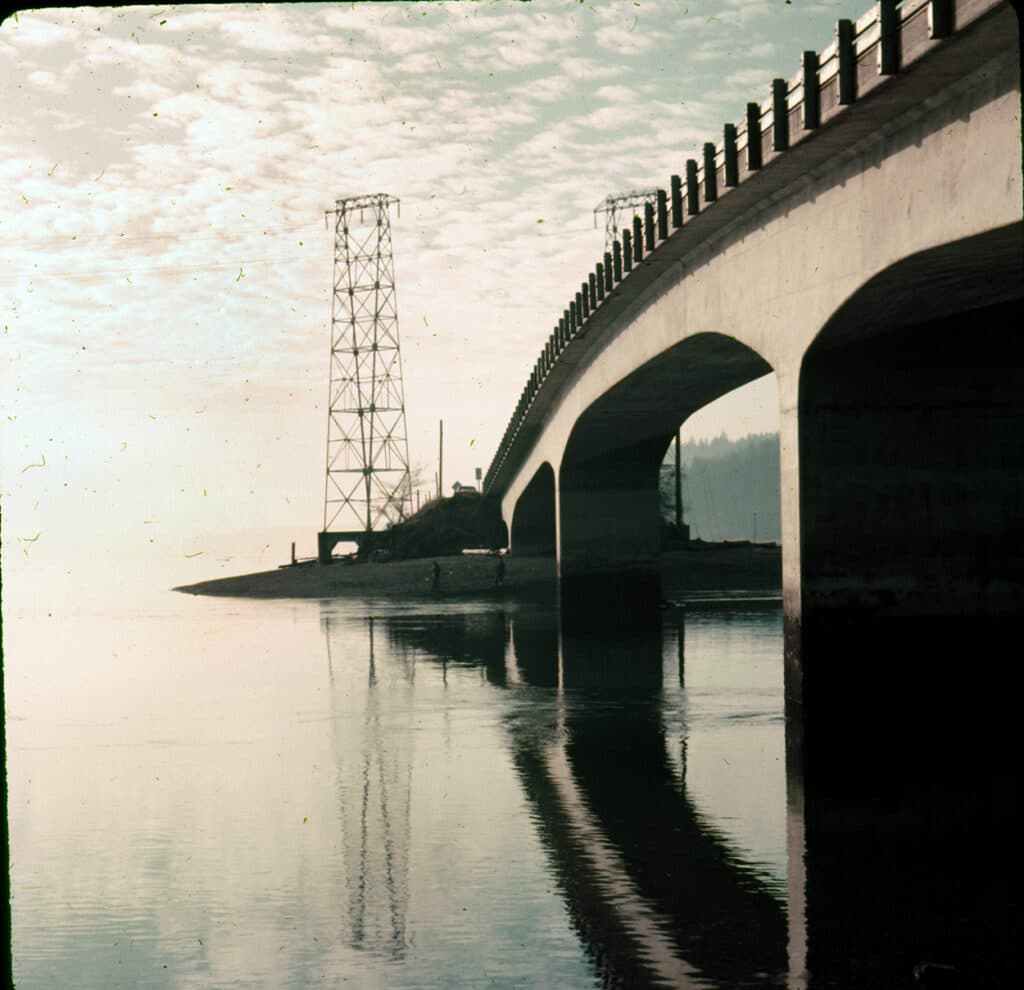
Power from the Cushman Dan crossed the Burley Lagoon via electric towers constructed on either side of the sandspit. The two towers were replaced in 2018 with a single tower. Photo by Frank Owen Shaw, Harbor History Museum collection, 1955.
As we gather the necessary data to document Warehouse No. 3 for the city’s historic register nomination, we felt a ghost sign acknowledging the building’s storied past was a fitting way to recognize its origin and the innovative company that has employed so many community members and provided power to the people over the course of the last century.
As we explore the feasibility of a new life for Warehouse No. 3, possibly as an education center for the museum and community at large, we celebrate its roots and all those whose lives have been changed forever by the electric generation.
Ghost sign
When walking North Harborview, take a moment to stop at the historic marker at the top of the museum stairs to see the inspiration for the Warehouse No. 3 “ghost sign.” These are painted signs on the sides and roofs of historic buildings “leftover” from the businesses that once occupied them.
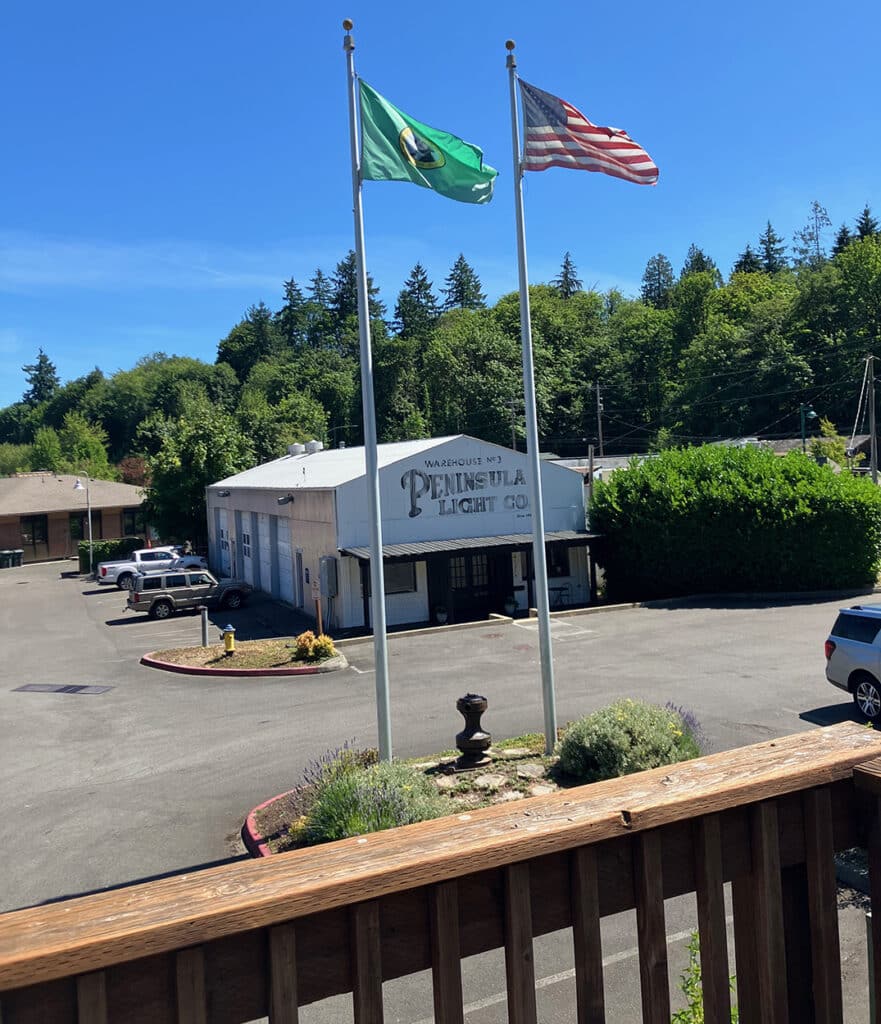
The ghost sign for PenLight’s former Warehouse No. 3 on the Harbor History Museum campus. Photo by Stephanie Lile
Local artist Curtiss Hall was inspired by ghost signs from Des Moines, Iowa to Tacoma and came up with the artwork proposal. Peninsula Light generously stepped in to sponsor the project just in time for their anniversary celebration.
Everyone is invited to join the fun on Monday, July 14, 2025. The museum will be open with free admission from 11 a.m. to 4 p.m. Peninsula Light trucks and demonstrations will be located throughout the parking lot.
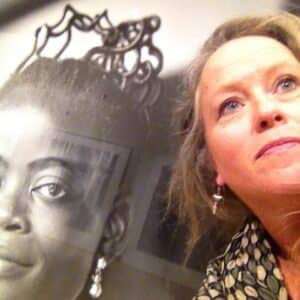
Stephanie Lile
Stephanie Lile, M.Ed, MFA has been the director of the Harbor History Museum since 2017. She’s an almost life-long resident of Gig Harbor and is a champion for historic preservation, cultural arts, and interdisciplinary learning. Her museum background scales large to small museums, from Vermont to Washington, DC, and Los Angeles. An avid researcher, Lile has published articles in numerous publications including Columbia Magazine, This Place, and Museum. Although she still dreams of being a National Geographic explorer, she currently applies that intensity to research on objects in the museum’s collection and beyond.


